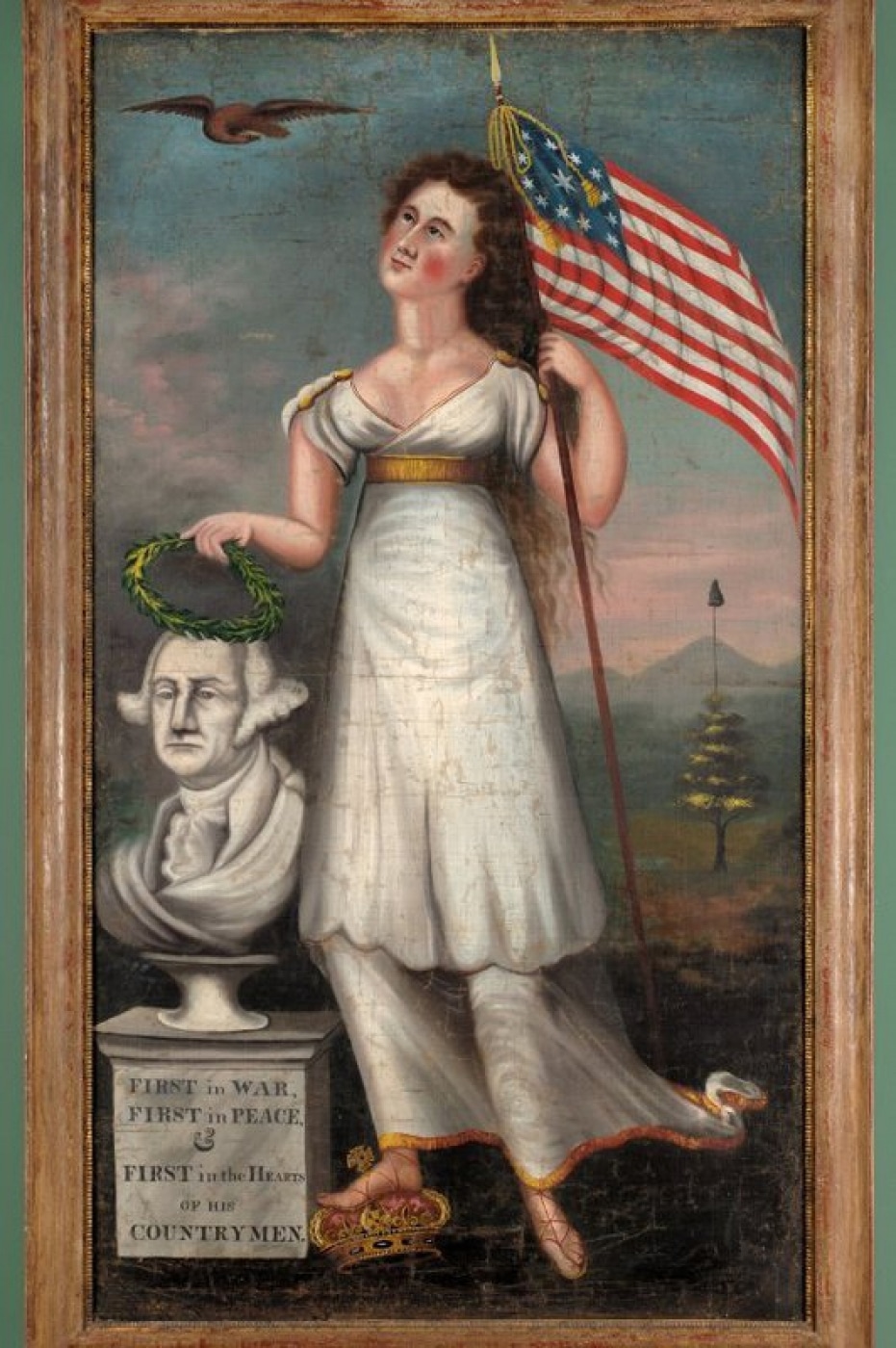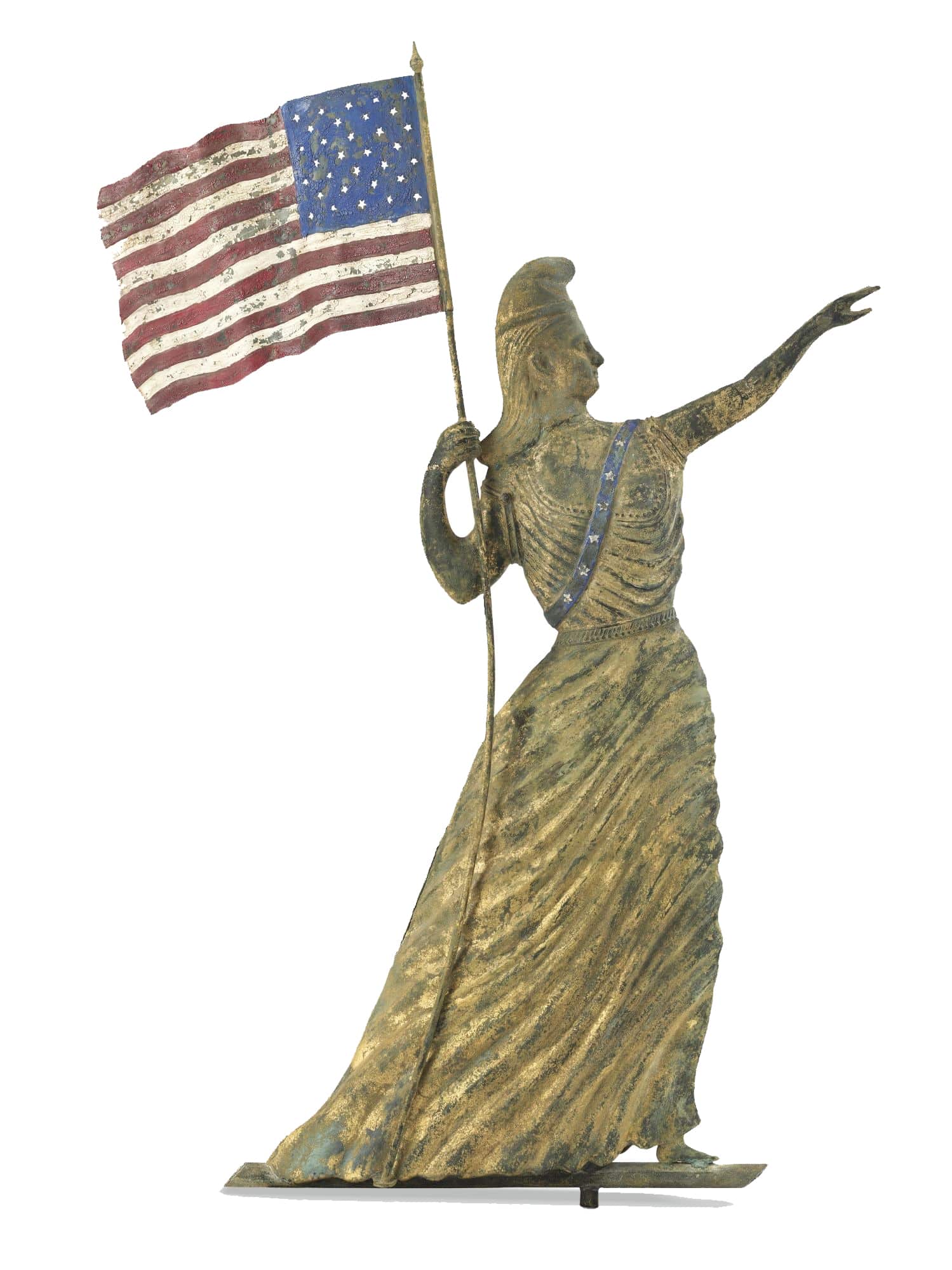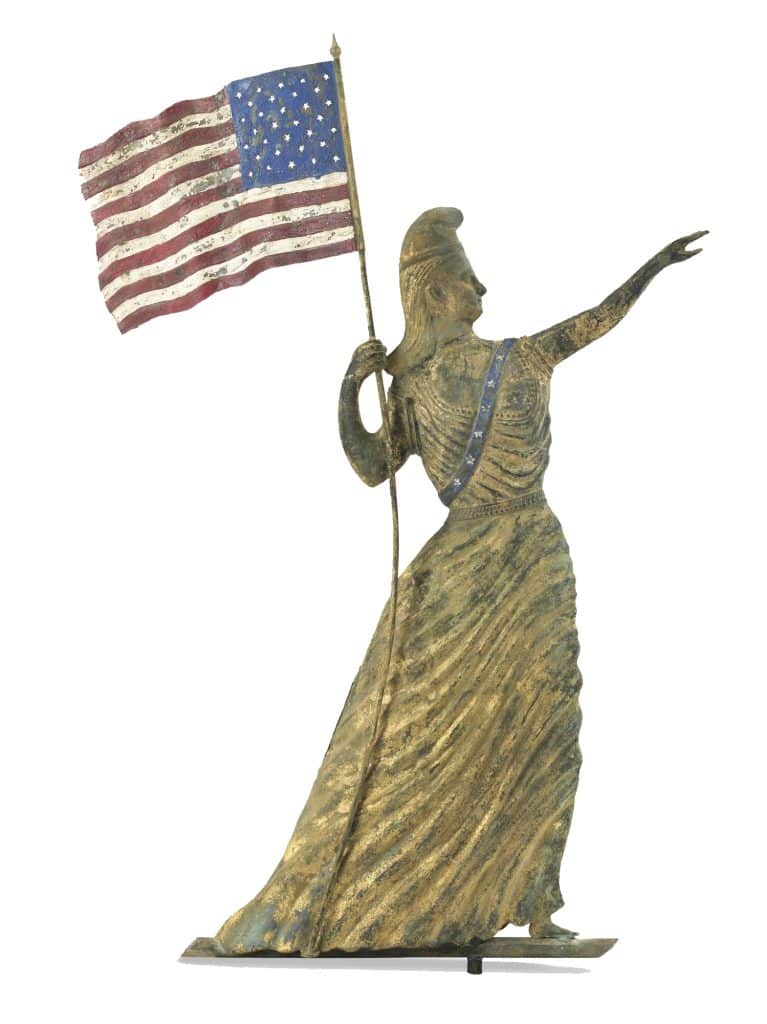The Feeling of Love and Respect for the Red, White, and Blue
By Judy Gonyeau

photo: Maryland Historical Society

photo: Fenimore Art Museum
The Age of Revolution
The year was 1775 and war with the British had begun. How did the rag-tag groups of the first Revolutionary War fighters identify themselves? It was not under the stars and stripes but under flags identifying what unit or regiment they were fighting with as battles erupted across the country. The Washington Cruisers used a white flag with a pine tree and the words “An Appeal to Heaven” written beneath. The Continental Marines used the Gadsden Flag (a yellow flag with a snake and the words “Don’t Tread On Me”) and the Moultrie Flag (a blue flag with a white crescent moon and the word “liberty” written into the white with blue lettering). The Green Mountain Boys had a green flag with a corner of blue with thirteen stars representing the Colonies. These and many other flags showed the regional pride the soldiers had while fighting the British and the symbols helped to document who fought in what battles.
As the war continued to unfold, the Second Continental Congress met in Philadelphia in June of 1775 to create a united militia known as the Continental Army and named George Washington as its commander-in-chief. A flag called the “Continental Colors” featured thirteen red and white stripes with a Union Jack in the canton, or upper left corner, of the flag. According to United-States-Flag.com, “Records show that Philadelphia seamstress Margaret Manny sewed the first Continental Colors for the USS Alfred, and in December of 1775, the flag was raised for the first time on any fighting vessel. A year later, the flag was considered the official flag of the American naval forces by the Maritime Committee of the Continental Congress.” And according to David Martucci, past-president of the North American Vexillological Association, “It was sort of a compromise between the radicals who wanted to see a separate nation and the people who were more conciliatory and wanted to see some accommodation with the crown.”
It was not until June 14, 1777, that the Second Continental Congress took the time to pass a resolution which stated “the flag of the United States be 13 stripes, alternate red and white” and that “the union be 13 stars, white in a blue field, representing a new constellation.”
The Betsy Ross Legend
Did Betsy Ross design and make the first U.S. Flag? Well, believe it or not, the jury is still out on this question. The legend and very pretty story that is told says Ross created the first flag in 1776 after a visit with George Washington. Sources of this information remain scarce, although Ross’ grandson William Canby did a presentation to the Historical Society of Pennsylvania in 1870 stating his grandmother did truly make the first flag.
According to Canby, Ross was visited in late May or early June 1776 by Washington, financier of the war Robert Morris, with Colonel George Ross, a relative and signer of the Declaration of Independence. During the visit, a sketch of the flag was given to Ross showing red and white stripes but the canton had thirteen six-pointed stars strewn about the space. She made a few design suggestions, including placing the stars in a circle and making them five-pointed instead of six, and the first of over 12 iterations created over time came into focus. On June 14, 1777, the flag known today as the “Betsy Ross” was officially adopted by Congress as the national flag.




The Flag in Every Form
Beyond the flying of the flag around the world, its depiction in fine and folk art, on clothing and on just about any surface you can imagine continues to inspire artists, designers, makers of souvenirs and fine glass over these past 244 years of being a country. The most notable genre of flag depiction is its use in Folk Art.
While flags made during the start of the Country are far and few between, they are still being created today in modern fabrics like Sunbrella to help prevent fading and triple-sewn-edged nylon to help prevent ripping. Do not expect any flag to last forever in the outdoors as the elements can be brutal. On average a flag, if flown outside, would need to be replaced at least once per year.
History.org also shares that Francis Hopkinson, a New Jersey delegate to the Continental Congress and signer of the Declaration of Independence, is also cited as having played a role due to the fact that in 1780, Hopkinson sought payment from the Board of Admiralty for his design of the “flag of the United States of America.” However, his petition for payment was denied because “he was not the only one consulted” on the design.
The Flag On Display
It is hard to imagine that the flag was not on display in every building, in every home, on wooden poles across the country following the Revolutionary War. The sense of pride or the “cult” of the Flag did not truly come to a head until the Civil War broke out in 1861. At that time, the Union held the flag as its own, creating a “rally ’round the flag” effect as its call to arms.
On the Confederate side came a host of designs for a variety of flags flown for different divisions of the Confederate armed services. From Stars and Bars (with 7, 9, 11, and 13-star versions) to the first Confederate Navy Jack, the Bonnie Blue Flag, the Biderman Flag, along with dozens of others. The “Old Dixie Flagî or the commonly called “Confederate Flag” is really a design used by several southern states that was popular with several different infantries, but the variety of flags feature almost 100 different designs on one flag website.

photo: Museum of International Folk Art
And beware of the many fakes. Tea staining is indeed “a thing” but if you know your fabrics, dyes, paints, and ovens (some artificial flags have been baked!), you have a better chance of buying one that is at least vintage.





Related posts: